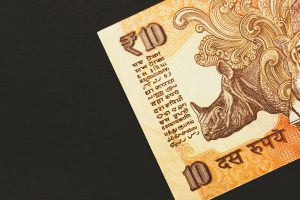Forex trading can be a complex and challenging process, but it can also be incredibly rewarding. One of the most important aspects of forex trading is being able to analyze and interpret forex charts. A forex chart is a visual representation of the price movements of a currency pair over a specific period of time. It is an essential tool for traders to make informed trading decisions. Drawing on forex charts can enhance your analysis and help you identify trends and patterns that may be invisible at first glance. In this article, we will explore the different ways to draw on forex charts and how it can improve your trading strategies.
Drawing tools in forex charts
Most forex trading platforms come with several drawing tools that you can use to annotate and mark up your charts. These tools can help you identify key levels of support and resistance, trend lines, chart patterns, and other important indicators.
Some of the most common drawing tools in forex charts include:
1. Trend Lines – A trend line is a diagonal line that connects two or more price points, indicating the direction of the trend. To draw a trend line, simply click on the trend line tool and then click on two points on the chart that represent the trend.
2. Horizontal Lines – A horizontal line is a straight line that extends from left to right on the chart, indicating a specific price level. To draw a horizontal line, select the horizontal line tool and then click on the chart at the desired price level.
3. Vertical Lines – A vertical line is a straight line that extends from top to bottom on the chart, indicating a specific point in time. To draw a vertical line, select the vertical line tool and then click on the chart at the desired time.
4. Fibonacci Retracement – The Fibonacci retracement tool is used to identify potential levels of support and resistance. It is based on the Fibonacci sequence of numbers and is drawn from the high to the low or from the low to the high of a given price movement.
5. Shapes – Shapes are used to highlight key areas on the chart, such as chart patterns or potential trading signals. Common shapes include triangles, rectangles, and circles.
Why drawing on forex charts is important
Drawing on forex charts can help you identify key levels of support and resistance, trend lines, chart patterns, and other important indicators. This information can be used to make informed trading decisions and develop effective trading strategies.
For example, drawing a trend line can help you identify the direction of the trend and potential areas of support and resistance. This information can be used to enter and exit trades at the most opportune times.
Drawing on forex charts can also help you identify potential trading signals. For example, if you notice a chart pattern forming, such as a head and shoulders pattern, you can use this information to enter a trade at the appropriate time.
Finally, drawing on forex charts can help you visualize your trading strategies and track your progress over time. By marking up your charts with your trading decisions, you can see how your strategies are working and make adjustments as needed.
Conclusion
Drawing on forex charts is an essential tool for traders to make informed trading decisions. By using drawing tools to identify key levels of support and resistance, trend lines, chart patterns, and other important indicators, traders can develop effective trading strategies and maximize their profits. Whether you are a beginner or an experienced trader, drawing on forex charts can help you improve your analysis and enhance your trading strategies.





